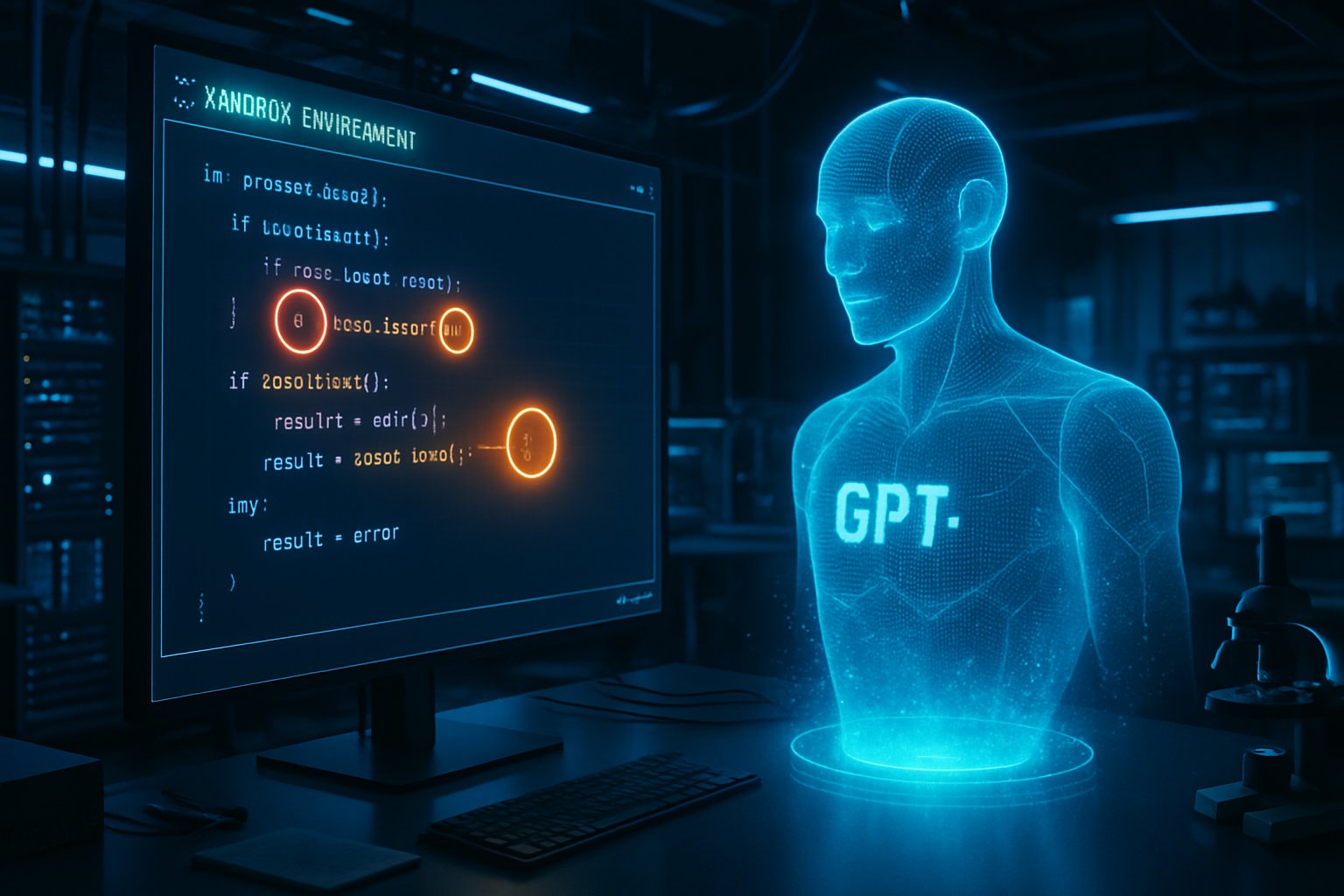
AI CERTS
5 hours ago
OpenAI Aardvark: GPT-5 Security Assistant Redefines Code Defense
Moreover, the announcement echoes broader moves toward AI-driven defense. Google DeepMind revealed CodeMender weeks earlier, while major security startups race to integrate similar capabilities. In contrast, Aardvark leans on GPT-5 reasoning and direct Codex integration to suggest patches. These converging trends create urgency for technical decision-makers.

GPT-5 Security Assistant Launch
OpenAI unveiled Aardvark on 30 October 2025. The company framed the product as an “agentic security researcher” that runs inside a controlled cloud environment. Meanwhile, invited partners can connect GitHub repositories and configure scanning scopes within minutes. The underlying GPT-5 security assistant [2] analyzes entire codebases before inspecting each new commit.
Additionally, Aardvark compiles an internal knowledge graph that tracks architectures, dependencies, and historical defects. Consequently, contextual alerts replace noisy pattern matches. Early press reports highlight reduced developer fatigue compared with traditional static scanners.
The launch establishes OpenAI’s defender-first positioning. These first impressions underscore Aardvark’s potential market impact. Therefore, understanding the tool’s architecture becomes essential before adoption.
Core Functional Overview Details
The platform follows four sequential phases. First, repository analysis constructs a detailed threat modeling baseline. Second, commit-level inspection applies GPT-5 reasoning against that baseline for precise software vulnerability detection. Third, sandbox validation attempts live exploitation to lower false positives. Fourth, Codex integration produces merge-ready patches for human review.
Core Agent Capability Set
- Contextual threat modeling built from design documents and dependency manifests.
- Ongoing open-source scanning for selected community projects at no cost.
- Exploit reproduction in ephemeral sandboxes to confirm impact.
- One-click patch proposals generated through Codex integration.
Furthermore, Aardvark pipes findings into CI/CD workflows, enabling automated policy gates. These integrated steps accelerate remediation without bypassing human governance. Consequently, development velocity remains protected.
Key capabilities converge to deliver closed-loop coverage. However, headline performance numbers still require careful scrutiny, which the next section addresses.
Benchmark Claims Scrutinized Data
OpenAI reports that Aardvark identified 92 percent of seeded flaws across curated repositories. Moreover, ten responsible disclosures already carry CVE identifiers. Axios and TechRadar echoed these figures, yet independent replication remains pending.
Headline Performance Metrics Data
Detection recall stands at 92 percent, according to internal tests. Meanwhile, sandbox validation purportedly slashed false positives below three percent. In contrast, many static tools exceed 20 percent false positives on identical corpora. Nevertheless, external labs have not yet published comparative dashboards.
Additionally, benchmark repositories reflect modern frameworks but exclude legacy binaries. Consequently, real-world recall may vary across monolithic estates. Therefore, prudent teams should pilot Aardvark on diverse modules before scaling.
These metrics indicate promising accuracy yet warrant third-party verification. Furthermore, cost and latency data still remain undisclosed, raising practical questions addressed later.
Benefits And Drawbacks Analyzed
Major Adoption Benefit Points
Many security leads cite continuous software vulnerability detection as the foremost gain. Furthermore, contextual threat modeling improves alert fidelity, trimming triage queues. Sandbox validation offers exploitable evidence, which accelerates decision making. Moreover, immediate patches through Codex integration can shorten mean-time-to-repair by days.
Persistent Risk Factor Set
Nevertheless, concerns surface about proprietary data exposure during cloud analysis. Additionally, automatically generated patches risk functional regressions if oversight lapses. Adversaries might also weaponize identical techniques for offensive research. Consequently, robust review workflows and audit logging remain mandatory safeguards.
The net benefit balance hinges on governance maturity. However, weighing these pros and cons requires awareness of competing offerings, explored next.
Competitive Landscape Shift Dynamics
Aardvark enters an increasingly crowded arena. Google DeepMind’s CodeMender applies transformer reasoning plus fuzzing to similar problems. Meanwhile, vendors such as Snyk and Veracode embed generative explanations within established platforms.
In contrast, only Aardvark touts a full GPT-5 reasoning stack with live open-source scanning outreach. Furthermore, its tight Codex integration delivers unified remediation suggestions, not generic diffs. Consequently, market analysts expect rapid feature convergence and pricing pressure across the segment.
This competitive tension drives innovation yet intensifies due-diligence demands. Therefore, buyers must examine vendor roadmaps and security attestations.
Governance And Adoption Steps
OpenAI has not released public pricing or service-level agreements. Nevertheless, enterprise prospects should draft questionnaires covering data residency, model retention, and rollback support. Prospective adopters can bolster internal readiness through structured playbooks and role-based access controls.
Professionals can enhance their expertise with the AI Ethical Hacker™ certification. Additionally, this credential deepens understanding of agentic defense workflows and responsible disclosure etiquette.
Moreover, pilot programs should include staged rollouts across representative repositories. Performance baselines, regression rates, and user feedback must be logged for executive review. Consequently, fact-based decisions can follow rather than hype-driven gambles.
Governance frameworks ensure technology benefits outweigh risks. Subsequently, organizations can capture strategic value, which our final section synthesizes.
Strategic Takeaways Moving Forward
Aardvark illustrates how a GPT-5 security assistant [3] can elevate defensive reach. Moreover, the tool’s agentic cycle—context, scan, validate, patch—compresses traditional security loops. Development teams receive actionable fixes instead of lengthy PDF reports. Additionally, OpenAI’s commitment to pro-bono open-source scanning could strengthen supply-chain resilience.
However, effective adoption demands rigorous oversight. Therefore, leaders must define success metrics, monitor patch acceptance rates, and conduct periodic model audits. Meanwhile, complementary upskilling through certifications builds internal trust and capability.
The landscape will mature rapidly as rivals iterate. Consequently, early experimenters gain learning advantages and influence roadmap priorities.
These insights equip stakeholders to evaluate agentic offerings with clarity. Furthermore, disciplined governance unlocks sustainable competitive gains.
Conclusion
OpenAI’s Aardvark marks a milestone for autonomous defense. The GPT-5 security assistant [4] couples intelligent threat modeling with verified software vulnerability detection and rapid fixes through Codex integration. Moreover, sandbox validation curbs alert fatigue while optional open-source scanning advances communal safety.
Nevertheless, privacy, accuracy, and governance questions persist. Therefore, security leaders should pilot deliberately, gather metrics, and foster human-in-the-loop reviews. Additionally, pursuing the linked certification bolsters organizational expertise for this next security epoch.
Act now to explore Aardvark’s beta, refine your controls, and elevate team skills. Subsequently, you will position your organization at the forefront of proactive, AI-driven defense.



